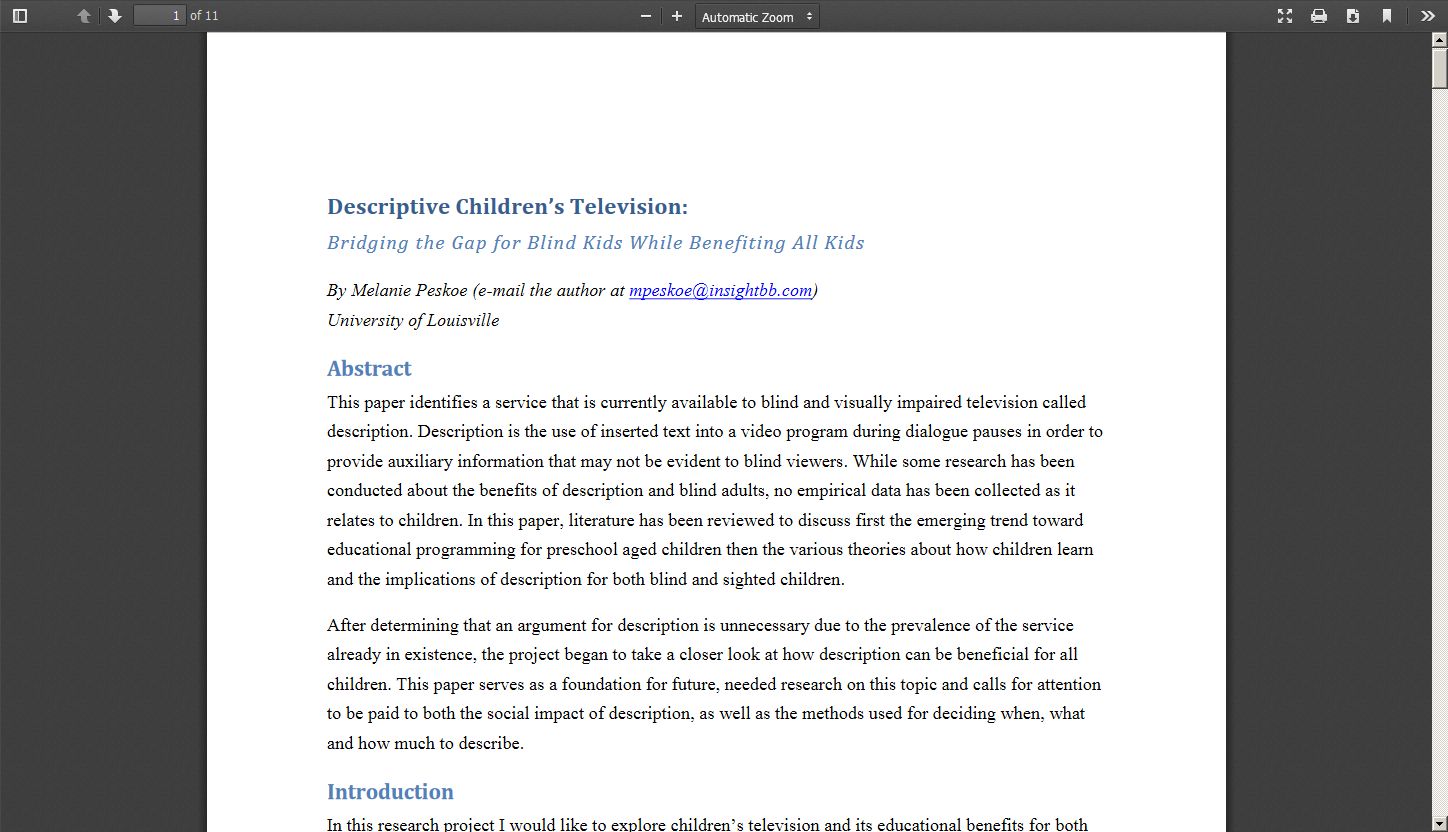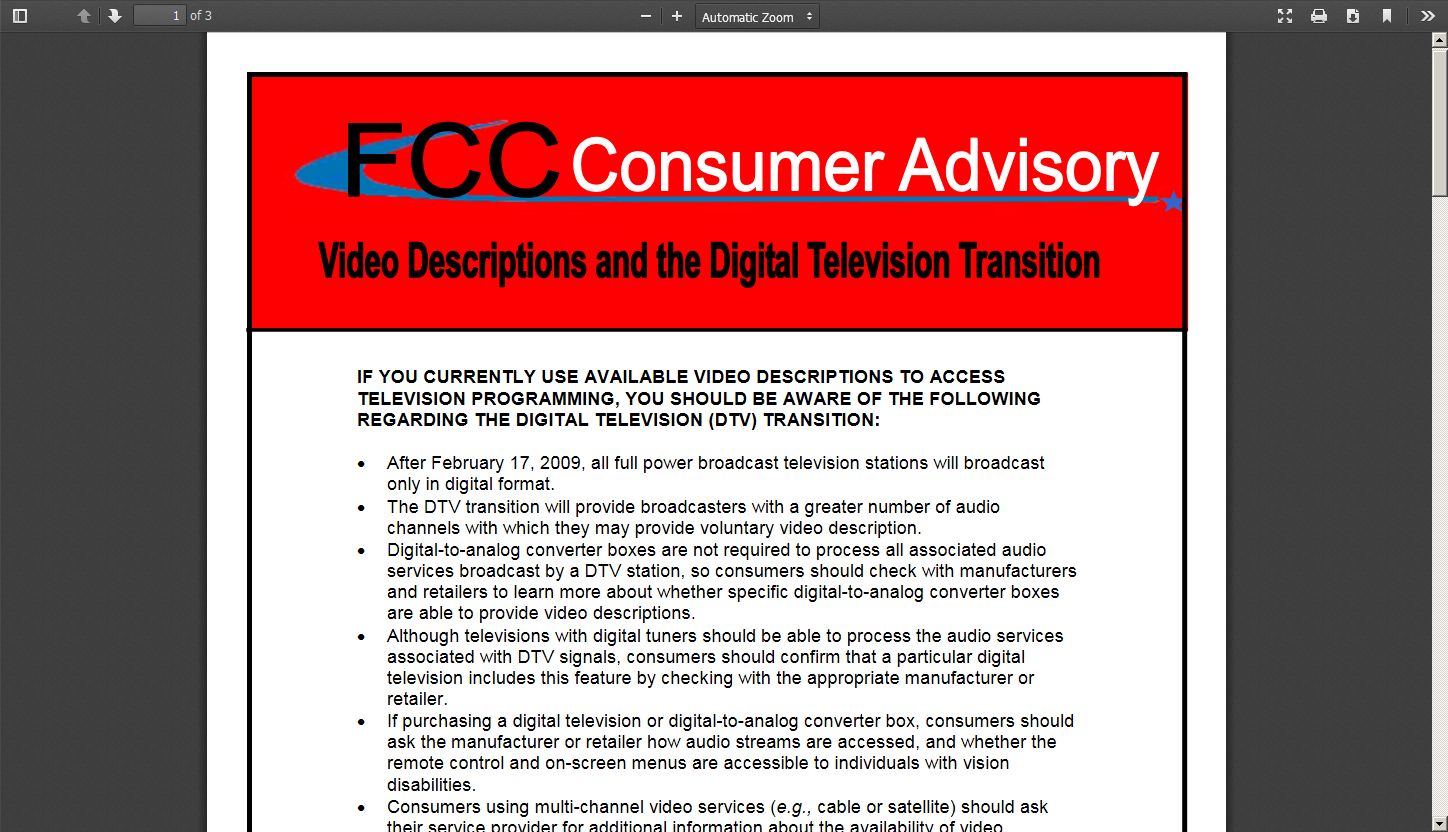Learning Center
Filtering by tag: description
-
Feasibility Study Relating To The Establishment Of A Descriptive Loan Service
This 1992 study was conducted by the Captioned Films/Videos Program (now the DCMP), with the principal investigator being Leo E. Persselin under the direction of the National Captioning Institute. It was submitted to the U.S. Department of Education (ED), Office of Special Education and Rehabilitative Services, and required by the ED as part of the Contract No. HS01005001 awarded to the National Association of the Deaf in 1991. The objective of the study was to: "Conduct a comprehensive study that will provide the funding agency with recommendations on any future loan service of video-based materials for visually impaired persons." Some conclusions and recommendations of the study included the following: (1) the existing accessible media are not exclusive of one another nor of a future loan service, (2) encouragement and support should be extended to all who have something to offer in expanding access to descriptive video, (3) all reasonable avenues should be explored for establishing a descriptive video l...Read More
about -
Audio Description: Research Into Awareness Levels
As part of the United Kingdom's (UK) Office of Communications (Ofcom) Access Service Review, this report details the results of Ofcom's advertising campaign to increase public awareness about audio description on British television. Prior to the campaign, fewer than 40% of UK adults (and fewer than 37% of visually impaired UK adults) were aware of audio description services, a severe departure from the level of familiarity with captions (known as subtitles in the UK) at 90% and sign language interpreting at 86%. Ofcom commissioned this study to measure the effectiveness of its campaign to educate the general public about audio description, as well as to: (1) establish awareness levels of audio description within the visually impaired community, (2) investigate usage of audio description services, as well as other tools used to access television, within the visually impaired community, and (3) understand media consumption among groups of visually impaired people, and identify any differences that might ex...Read More
about













